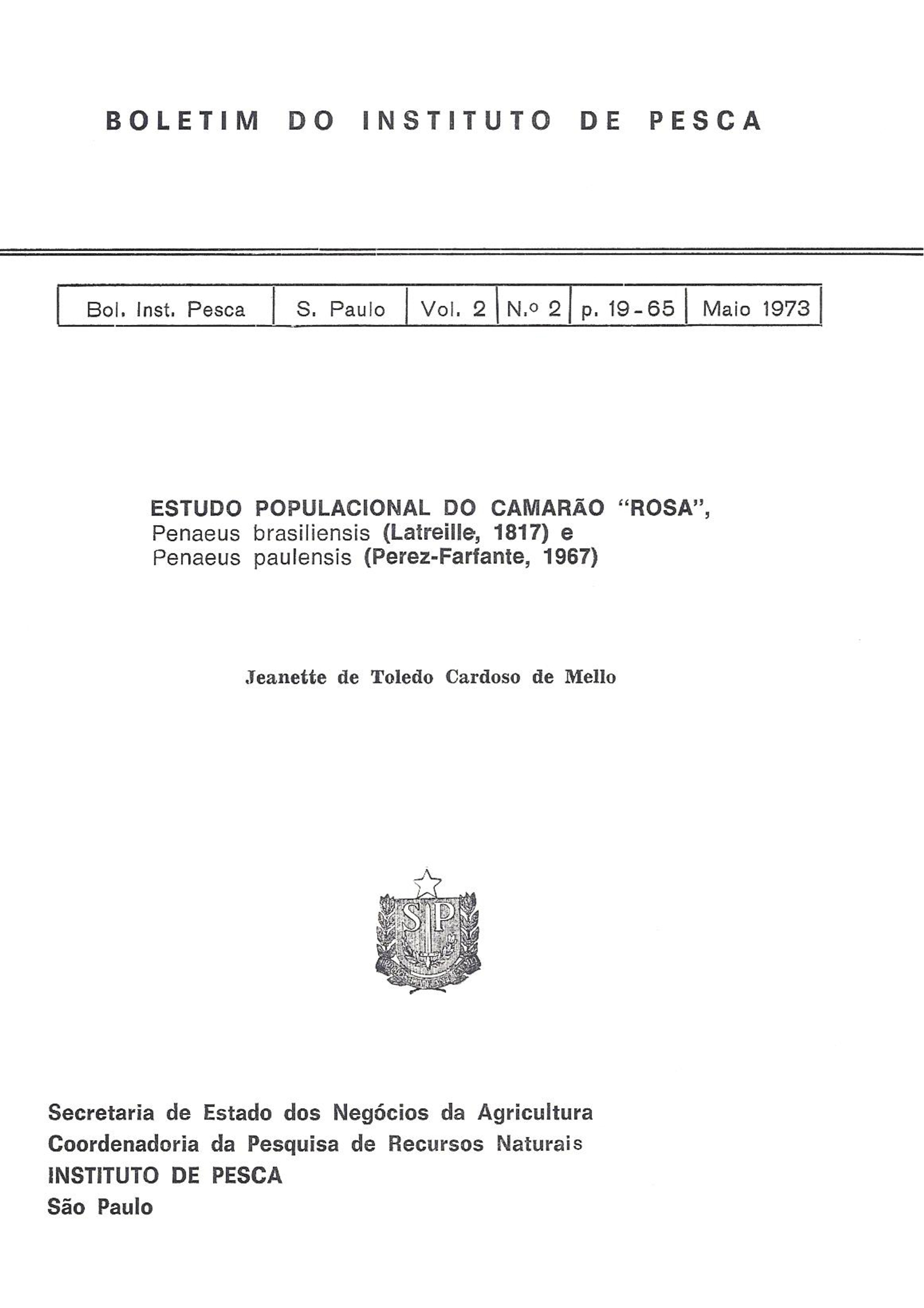ESTUDO POPULACIONAL DO CAMARÃO "ROSA" Penaeus brasiliensis, (LATREILLE, 1817) E Penaeus paulensis (PEREZ-FARFANTE, 1967)
Keywords:
NíO CONSTAAbstract
The purpose of this work is the determination of the influence of the fishery on the mortality rate of Penaeus brasiliensis and Penaeus paulensis (pink shrimp). The informations that we have obtained are important for Fishery Research, Ecology and other biological studies. These informations allow us to know about the behavior of a population when some individuals are eliminated. This work deals with the elimination due to fishery, which is similar to the elimination due to predation, pollution, etc. We come to the following conclusions: The populations of P. brasiliensis and P. paulensis presented periodical reproduction, giving rise to natural age classes. There is one main spawning per year by June-July for P. paulensis and September-October for P. brasiliensis. This type of information is basical for the applied methodology. We correlated the mean total length (L), in centimeters, with age (t), in months (growth curve), by means of the von Bertalanffy expression resulting: for P. brasiliensis - female: Lt = 20.5 (1-e-0.2lt) for P. paulensis - male: Lt = 16.5 (1-e-0.20t). This re1ationship reinforces our previous conclusion about the existence of natural age classes. The mean total length (L) was correlated with the mean weight (W), in grams, by means of the expression: W = aLb, resulting: for P. brasiliensis female: W = 0.0101 L2.96), male: W = 0.0062 L3.ll; for P. paulensis female: W = 0.0108 L2.90, male: W = 0.0106 L2.87. These relationships were used in the estimation of proportional values to the population's sizes ( ). We have estimated the bimestral mean mortality rate for both species. The general mean for the analyzed period (1965-1969) was: for P. brasi1iensis: 44.8, for P. pau1ensis: 47.9. Plotting the values against time we have concluded that the populations of P. brasi1iensis and P. pau1ensis are in equilibrium. On the average, the population size for both species remains constant through the period 1965-1969. This conclusion does not imply necessarily in the non existence of influence of the fishery on the mortality rate that occurs in these populations. An increase in the mortality rate might be balanced by an increase in the recruitment rate; in this way, the equilibrium could be maintained. Plotting the bimestral mean mortality rate against the corresponding values of the applied effort, we have concluded that the mortality rate does not depend significantly on the effort intensity. As a final conclusion we can say that the mortality rate of P. brasiliensis and P. paulensis populations was not significantly increased by the fishery in the period 1965-1969.










